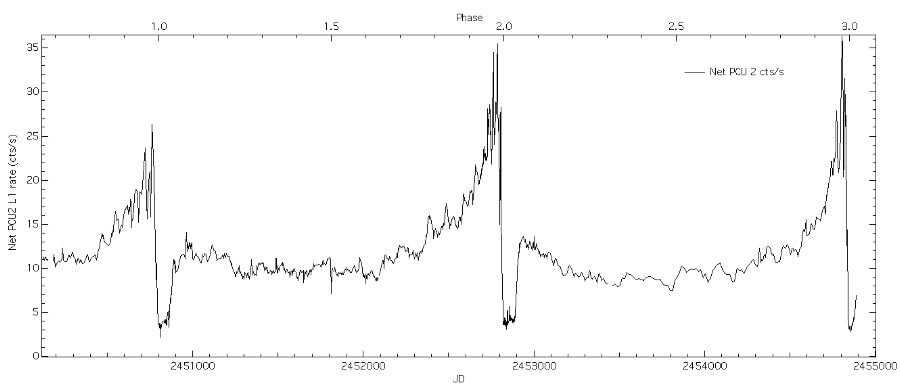
 Credit: M. F. Corcoran; RXTE team; NASA
Credit: M. F. Corcoran; RXTE team; NASA
Turn Turn Turn
Here we go again. Perhaps a fitting start to 2009, the year of astronomy, Eta Carinae, one of the Galaxy's most massive stars, is acting up again. Now believed to be a binary star system with a (mostly) unseen massive star companion, the system went through periastron passage within two weeks of New Year's Day, 2009. This is a time when the two stars (if there really are two!) come to their closest approach (called periastron), which (nearly) puts the companion star within the photosphere of Eta Car. The orbit is really weird, by the way - so eccentric that at apastron, when the stars are farthest apart, the companion is about a factor of twenty or more farther away from Eta Car than it is at periastron. This is so weird that if we didn't have another system like it we'd start to disbelieve it. But reassuringly, Eta Car began its periodic X-ray minimum within a day of expectations. Astronomers began to believe this star was boringly predictable. But Eta Car never fails to astonish - halfway through the X-ray minimum, Eta Car's X-ray emission unexpectedly began to rise. Why?
Published: March 16, 2009
<
HEA Dictionary ● Archive
● Search HEAPOW
● Other Languages
● HEAPOW on Facebook
● Download all Images
● Education ● HEAD
>
Each week the HEASARC
brings you new, exciting and beautiful images from X-ray and Gamma ray
astronomy. Check back each week and be sure to check out the HEAPOW archive!
Last modified Tuesday, 27-Feb-2024 10:10:04 EST


